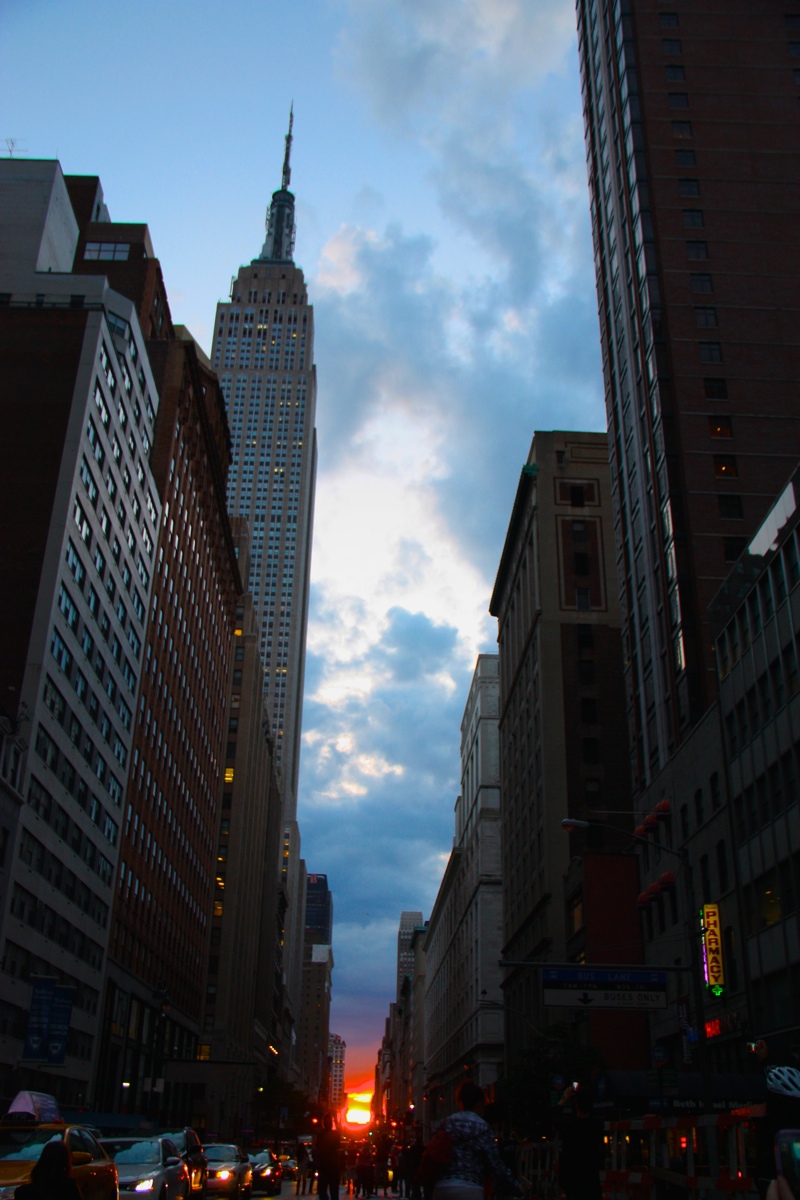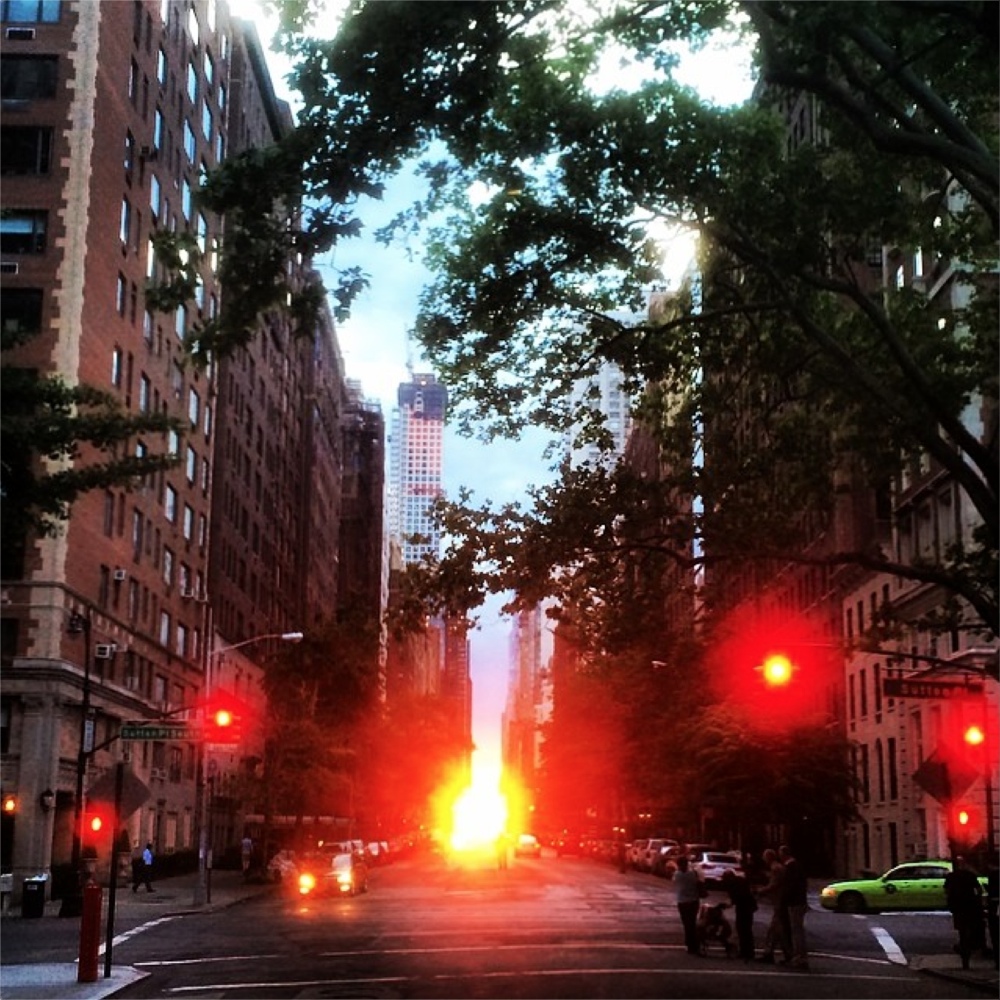Marvelous 'Manhattanhenge' Sunset Peers Through New York City Clouds (Photos)

Tonight's "Manhattanhenge" sunset peeked out from the clouds for some New Yorkers tonight (May 30), bathing Manhattan's cross streets in a glow. The solar spectacle was completely clouded out last night (May 29).
Four times a year the setting sun hits the horizon exactly along Manhattan's street grid, so that it illuminates the north and south sides of the cross streets. The spectacle happens for two consecutive nights, with a full-sun and half-sun (when half the sun appears below the horizon at the time of sunset). Tonight's event would have been a full-moon Manhattanhenge.
Rachel Walker got a glimpse of tonight's setting sun, writing in an email to Live Science: "I was at E34th and Park. The clouds blocked it a bit so you could never see the whole sun, but it was far better than last night where there was no color at all in the clouds!" [Gallery: See Photos of Manhattanhenge Sunsets]
Twitter was abuzz with messages from New Yorkers awaiting or just having spotted the setting sun:
After clouds last night it looks promising for #Manhattanhenge tonight. http://t.co/wxurxpOLSP
— Pat Kiernan (@patkiernan) May 30, 2014
Slightly better #Manhattanhenge tonight... #sunset #NYC pic.twitter.com/A0t0DfIi83
Get the world’s most fascinating discoveries delivered straight to your inbox.
— Rachel Walker (@RachWalker12) May 31, 2014
Always great to be in town for #Manhattanhenge. pic.twitter.com/6VDkQIQ6Pc
— World Travelure (@Worldtravelure) May 31, 2014
Marvelous #Manhattanhenge tonight in #NYC. pic.twitter.com/uKh0SELXVb
— Inga Sarda-Sorensen (@isardasorensen) May 31, 2014
If you missed it, the next Manhattanhenge of 2014 will occur on July 11 and July 12, with a full-sun and half-sun spectacle, respectively.
Manhattanhenge, coined by astronomer Neil deGrasse Tyson, is named after the English monument Stonehenge; there, the rising sun lines up with some of the vertical stones on the summer solstice.
While Stonehenge has the summer solstice, Manhattan, Tyson figured, has these few nights every year with a mystical alignment of the sun along the city's cross streets. "What will future civilizations think of Manhattan Island when they dig it up and find a carefully laid out network of streets and avenues?," Tyson writes in a blog post on the American Museum of Natural History's Hayden Planetarium website. "Surely the grid would be presumed to have astronomical significance, just as we have found for the pre-historic circle of large vertical rocks known as Stonehenge, in the Salisbury Plain of England."
As for why the sun would set in a different spot throughout the year, you can credit Earth's tilted axis. Though the sun sets at due west on the spring and autumn equinoxes, sunset is slightly off of due west at all other times of the year, according to Tyson. If the city's rectangular grid had been aligned along the geographic north-south line, Tyson notes, Manhattanhenge would occur on the equinoxes. Rather, Manhattan's street grid is rotated 30 degrees east from geographic north.
Editor's Note: If you have an amazing sunrise/sunset or general science photo you'd like to share for a possible story or image gallery, please contact managing editor Jeanna Bryner at LSphotos@livescience.com.
Follow Jeanna Bryner on Twitter and Google+. Follow us @livescience, Facebook & Google+.
Jeanna Bryner is managing editor of Scientific American. Previously she was editor in chief of Live Science and, prior to that, an editor at Scholastic's Science World magazine. Bryner has an English degree from Salisbury University, a master's degree in biogeochemistry and environmental sciences from the University of Maryland and a graduate science journalism degree from New York University. She has worked as a biologist in Florida, where she monitored wetlands and did field surveys for endangered species, including the gorgeous Florida Scrub Jay. She also received an ocean sciences journalism fellowship from the Woods Hole Oceanographic Institution. She is a firm believer that science is for everyone and that just about everything can be viewed through the lens of science.



